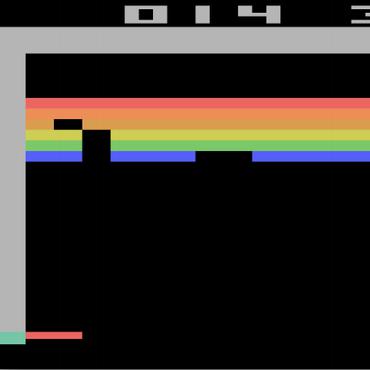Atari Games
277 papers with code • 64 benchmarks • 6 datasets
The Atari 2600 Games task (and dataset) involves training an agent to achieve high game scores.
( Image credit: Playing Atari with Deep Reinforcement Learning )
Libraries
Use these libraries to find Atari Games models and implementationsDatasets
Latest papers
A Robust Quantile Huber Loss With Interpretable Parameter Adjustment In Distributional Reinforcement Learning
Distributional Reinforcement Learning (RL) estimates return distribution mainly by learning quantile values via minimizing the quantile Huber loss function, entailing a threshold parameter often selected heuristically or via hyperparameter search, which may not generalize well and can be suboptimal.
Active Reinforcement Learning for Robust Building Control
Reinforcement learning (RL) is a powerful tool for optimal control that has found great success in Atari games, the game of Go, robotic control, and building optimization.
Distributional Bellman Operators over Mean Embeddings
We propose a novel algorithmic framework for distributional reinforcement learning, based on learning finite-dimensional mean embeddings of return distributions.
Absolute Policy Optimization
In recent years, trust region on-policy reinforcement learning has achieved impressive results in addressing complex control tasks and gaming scenarios.
MiniZero: Comparative Analysis of AlphaZero and MuZero on Go, Othello, and Atari Games
This paper presents MiniZero, a zero-knowledge learning framework that supports four state-of-the-art algorithms, including AlphaZero, MuZero, Gumbel AlphaZero, and Gumbel MuZero.
PGDQN: Preference-Guided Deep Q-Network
Stochastic exploration is the key to the success of the Deep Q-network (DQN) algorithm.
Learning of Generalizable and Interpretable Knowledge in Grid-Based Reinforcement Learning Environments
Understanding the interactions of agents trained with deep reinforcement learning is crucial for deploying agents in games or the real world.
Beyond Surprise: Improving Exploration Through Surprise Novelty
We present a new computing model for intrinsic rewards in reinforcement learning that addresses the limitations of existing surprise-driven explorations.
Approximate Model-Based Shielding for Safe Reinforcement Learning
Reinforcement learning (RL) has shown great potential for solving complex tasks in a variety of domains.
OCAtari: Object-Centric Atari 2600 Reinforcement Learning Environments
In our work, we extend the Atari Learning Environments, the most-used evaluation framework for deep RL approaches, by introducing OCAtari, that performs resource-efficient extractions of the object-centric states for these games.

































































 Arcade Learning Environment
Arcade Learning Environment
 DQN Replay Dataset
DQN Replay Dataset
 Atari-HEAD
Atari-HEAD
 Atari Grand Challenge
Atari Grand Challenge
 AtariARI
AtariARI
 RLU
RLU


